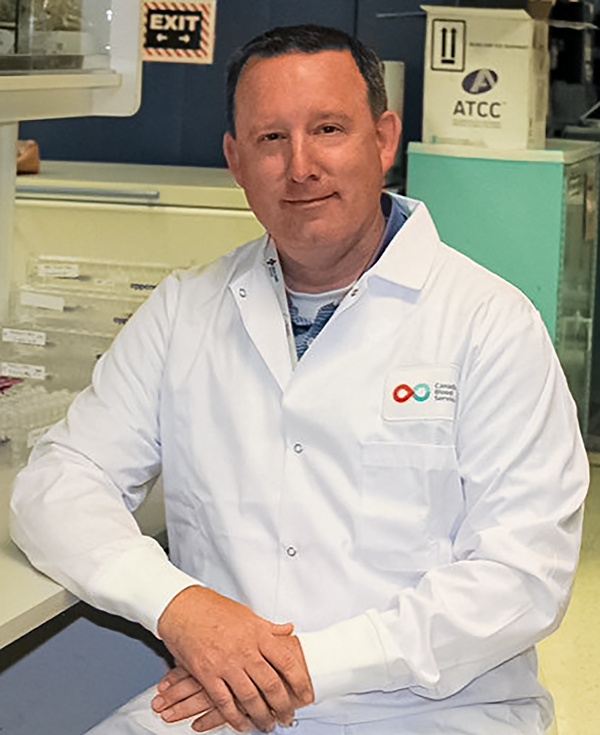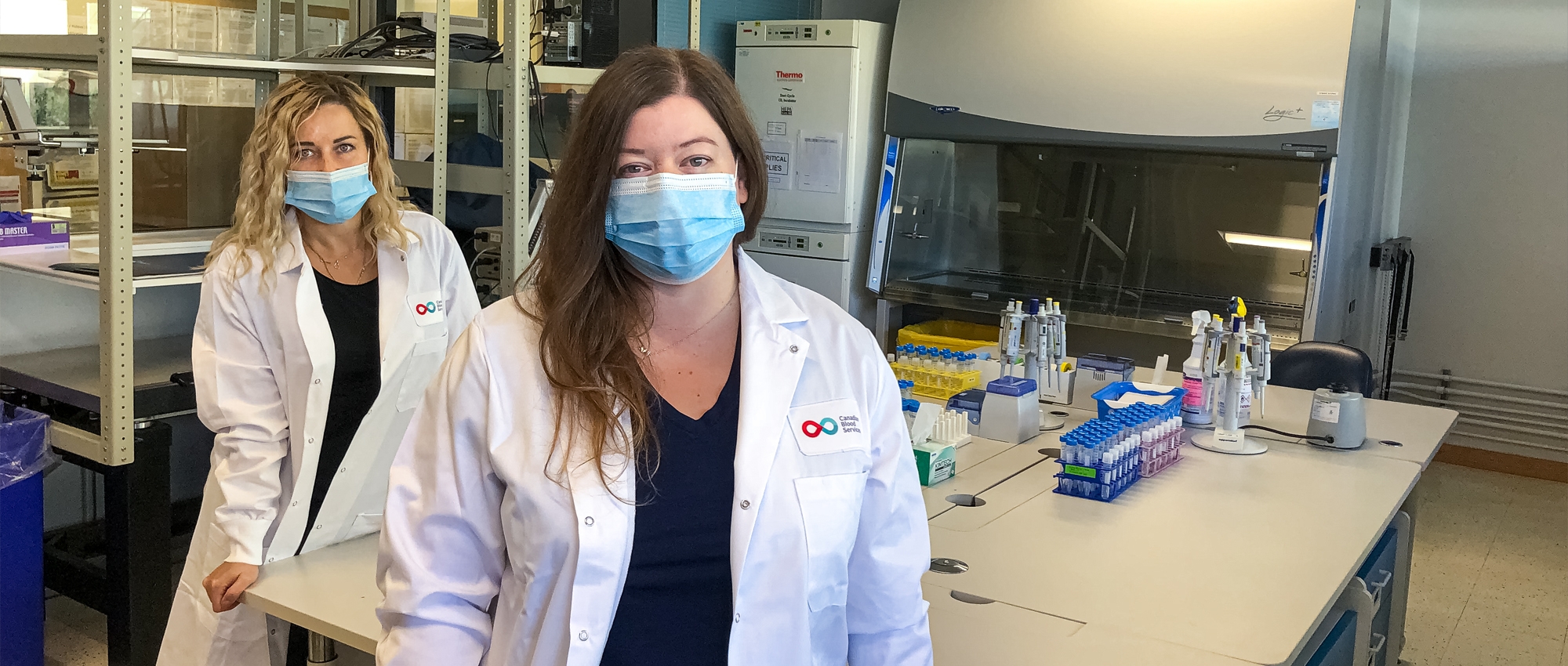Breakthrough study uses AI to analyze red blood cells
Discovery likely to improve patient diagnosis and quality testing of stored red cells
You can tell a lot about a red blood cell from its shape, and artificial intelligence can be used to analyze it better and faster — for the benefit of both patients and blood operators worldwide.
That’s the finding of a study recently published in the prestigious journal Proceedings of the National Academy of Sciences. One of the study’s lead authors was Dr. Jason Acker, a senior scientist at Canadian Blood Services’ Centre for Innovation.
“Our study shows that artificial intelligence gives us better information about the red blood cell morphology, which is the study of how these cells are shaped, much faster than human experts,” says Dr. Acker. “We anticipate this technology will improve diagnostics for clinicians as well as quality assurance for blood operators such as Canadian Blood Services in the coming years.”
The study took more than three years and involved 19 experts in five countries and 12 academic institutions. It was led by Dr. Acker and researchers from the Broad Institute of MIT and Harvard and the department of physics at Ryerson University in Toronto, Ont.
What does a red blood cell’s shape tell us?
The shape of a red blood cell reveals its age. A red blood cell lasts about 115 days in the body. Newer, healthier red blood cells are shaped like discs with raised edges, a bit like a donut. This shape allows them to squish into the tiniest blood vessels in our bodies, called capillaries.
As red blood cells age they begin to look less like donuts and more like Timbits. Their edges start to become ragged, then jagged, and eventually the cell turns into a sphere, no longer very useful for its job of transporting oxygen throughout the body.
In Dr. Acker’s lab, scientists routinely study the shape of red blood cells to monitor the quality of red blood cell units for patients. All donors have a mix of old and new blood cells, but the proportions differ from person to person. For example, some of Dr. Acker’s other work indicates young women tend to have a larger proportion of young red blood cells than older women or men of any age.
Red blood cell shapes can also be used to diagnose and assess people with certain disorders. For example, when someone has sickle cell disease, many of their red blood cells are crescent- or sickle-shaped.
Using AI to get richer data, faster
The way we examine red blood cell shape hasn’t changed much in over a century. Blood is smeared on a slide and examined with a microscope. Experts in red blood cell morphology use their training to painstakingly categorize and count each red blood cell in the sample into one of six shapes.
This work is time-consuming, but it’s also subjective, with counts often varying significantly among all but the best experts in the field. The other challenge is that red blood cells don’t just snap from one shape to the next; they change gradually over time. However, when a cell’s shape is between two of the six categories, the expert uses their own judgment to choose the one that seems closest.
The researchers in the recent study looked to machine learning to analyze red blood cell shape more quickly and accurately, and it worked. But their first task was actually a manual one. The researchers collected and manually categorized more than 52,000 red blood cell images under the direction of Tracey Turner, a senior research assistant in Dr. Acker’s lab and an expert in red blood cell morphology. This collection of red blood cell images is now the world’s largest freely available database of annotated red blood cells — a feat in itself.
These images were then used to train a neural network, a computer system that mimics the way the human brain works. Neural networks use algorithms to identify underlying relationships in a set of data. This neural network performed very well in categorizing cell shape.

Dr. Jason Acker, a senior scientist at Canadian Blood Services’ Centre for Innovation
“One of the amazing things about machine learning is that it allows us to see relationships we wouldn’t otherwise be able to see. We categorize the cells into the buckets we’ve identified, but when we categorize we take away information,” says Dr. Acker.
“Machines are naïve of bias, and AI reveals some characteristics we wouldn’t have identified and is able to place red blood cells on a more nuanced spectrum of change in shape.”
Better quality assessment, better diagnoses, faster
This technology may be a game-changer in many areas, from red blood cell research to quality testing of blood products. It could also improve the speed and accuracy of diagnosing and assessing conditions such as malaria, sickle cell disease and other disorders.
For Dr. Acker, it’s especially useful in one of his research goals: better understanding the quality of blood products to ensure the highest quality products get to the right patients at the right time. AI can provide richer, more nuanced data for research in a fraction of the time it takes to get it manually. Dr. Acker is deeply interested in factors that influence the quality of red blood cell units — from which donors provide the highest-quality red blood cells, to the way blood donations are processed.
Second, AI has enormous potential to reduce the number of blood donations required for essential quality monitoring. With machine learning, quality testing that currently takes months could be done in a day, using smaller quantities of donated blood. In other words, blood currently diverted for testing could instead be used for patients.
The results of speedier quality testing could also be used to revise the shelf life of red cell units, or direct units to the patients for whom they are best suited.
“Ultimately, this will likely become part of blood operators’ quality control processes,” says Dr. Acker. “It provides timely information about individual products, which will help ensure we have important quality information to help inform how best to distribute blood to Canadian patients.”



